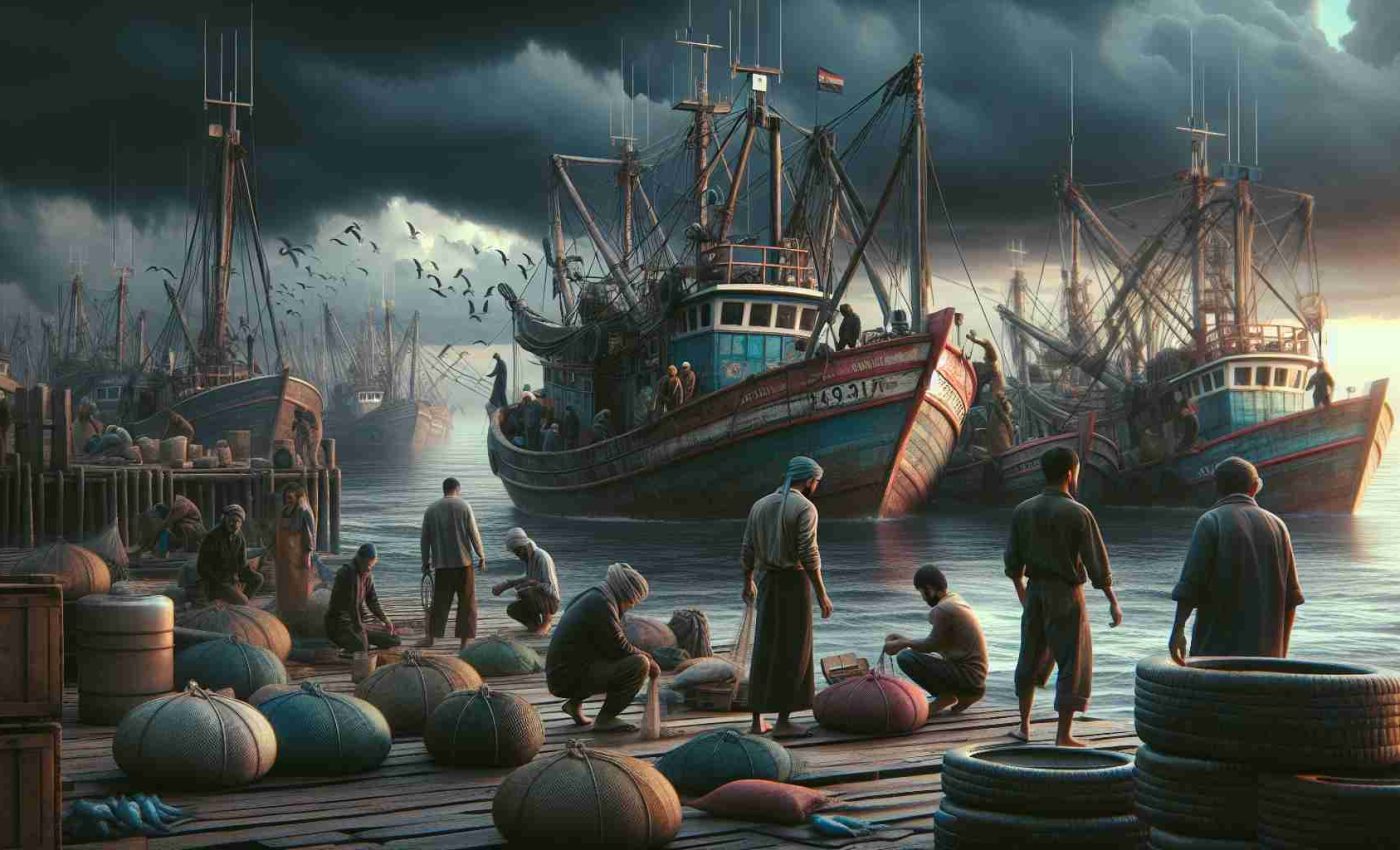As anticipation builds, the crew aboard the Terre-Neuvas waits impatiently at the Port of Saint-Pierre, eager to embark on their fishing journey. Despite the new fishing quotas for 2025 set by the Northwest Atlantic Fisheries Organization (NAFO) being open, the vessel hasn’t yet received the necessary permissions to start fishing.
Arriving on January 21, the crew, consisting of nine members, six of whom hail from the local area, busily prepares the ship. They load ice and bait, hoping to quickly head to the rich fishing grounds nearby. Atlantic halibut, their main target, are still plentiful in the waters close to Saint-Pierre and Miquelon, but time is of the essence as these fish begin to migrate.
The only hurdle remains the lack of a prefectural decree that would allocate the newly established NAFO quotas to the fishing fleet. Last September, the organization granted various quotas for 2025, including significant allocations for popular species like redfish, yellowtail flounder, and black halibut.
Although ASPM Océan primarily targets halibut, there’s potential for the company to trade quotas with other fishing enterprises, a strategy they are now considering. The local prefecture has stated that the quota allocation is expected to be resolved in the coming weeks, leaving the Terre-Neuvas awaiting the green light to set sail.
The Broader Impact of Fishing Quotas on Coastal Communities
As fisheries like those around Saint-Pierre and Miquelon adapt to new regulations from organizations such as the Northwest Atlantic Fisheries Organization (NAFO), the implications reverberate beyond just the seas. The newly established quotas, while designed to promote sustainable fishing practices, are central to the economic vitality of local communities dependent on the fishing industry. Local livelihoods hinge on timely access to these waters, making bureaucratic delays all the more consequential.
Moreover, the tension between conservation and commerce illustrates a deeper cultural narrative surrounding traditional fishing practices. Many coastal communities face the risk of losing their fishing heritage in the wake of modern regulations. This shift raises questions of identity and sustainability as younger generations weigh traditional livelihoods against new economic opportunities in diversified sectors.
From an environmental perspective, the long-term significance of these quotas cannot be overstated. If adhered to faithfully, such regulations can lead to healthier fish populations, positively influencing ecosystems and promoting biodiversity. Conversely, mismanagement or failure to enforce these quotas may lead to overfishing and ecological imbalance, ultimately threatening both the marine environment and the communities relying on it.
As the situation unfolds, observing how local fishing enterprises negotiate quotas will provide vital insight into future trends in maritime governance, conservation efforts, and their global implications. Acknowledging these complexities is crucial for crafting policies that support both economic and ecological resilience in the fishing community.
Setting Sail: The Countdown to a Promising Fishing Season in Saint-Pierre
Overview of the Terre-Neuvas Expedition
As the crew aboard the fishing vessel Terre-Neuvas prepares at the Port of Saint-Pierre, excitement fills the air. The team of nine, predominantly local fishermen, is eager to navigate to the bountiful fishing grounds. The Northwest Atlantic Fisheries Organization (NAFO) has announced new fishing quotas for 2025, but the crew awaits the necessary permissions for fishing to commence.
New Fishing Quotas and Their Implications
NAFO has established substantial quotas for various species, which became effective in January 2025. Notably, these include significant allocations for popular fish such as redfish, yellowtail flounder, and black halibut. The announcement has generated optimism within the local fishing community as these quotas are crucial for sustainable fishing practices.
Pros and Cons of the New Quotas
Pros:
– Sustainability: The allocation of quotas aims to prevent overfishing and preserve marine biodiversity.
– Economic Impact: Increased quotas may lead to higher catches, benefiting local economies reliant on fishing.
Cons:
– Restrictions: Stricter regulations may limit the fishing activities of smaller enterprises.
– Compliance Costs: Fishermen may face additional costs related to quota management and compliance.
Local Fishing Strategy and Market Analysis
Given that ASPM Océan primarily targets halibut, there is potential for strategic quota trading with other fishing enterprises. This innovative approach would allow for flexibility in operations and the possibility of maximizing revenue. Market trends indicate a growing demand for sustainably sourced seafood, which could favor fishermen adhering to NAFO’s quota system.
Key Features of Local Fishing Operations
– Crew Composition: Nine-member crew, enhancing local employment opportunities.
– Focus Species: Atlantic halibut, with a potential for multi-species targeting.
– Preparation Activities: Loading ice and bait indicates readiness for swift action upon receiving permissions.
Limitations and Future Prospects
While optimism surrounds the fishing season, the primary limitation remains the pending prefectural decree. The local prefecture has assured the fishing community that the quota allocation issue will be resolved shortly, which is vital for the Terre-Neuvas to set sail.
Insights on Future Fishing Trends
1. Technological Innovations: Adoption of advanced technologies for tracking fish populations could enhance efficiency.
2. Sustainability Focus: Increased consumer awareness about sustainable fishing will drive market demand.
3. Potential Collaboration: Cooperation among local fishermen for quota trading is likely to become a trend in the industry.
Conclusion
With the fishing quotas set and preparations underway, the Terre-Neuvas and its crew are on the brink of an exciting fishing season. As they await clearance to embark, the evolving landscape of fishing regulations offers both challenges and opportunities for local enterprises. This season may not only be significant for the crew but could also set the tone for future sustainable fishing practices in the region.
For more information on the latest fishing regulations and updates, visit the Northwest Atlantic Fisheries Organization.







